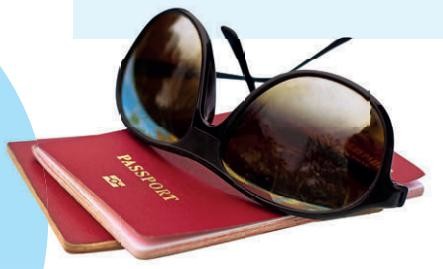Buying travel insurance might not be as simple as you think.


Buying travel insurance might not be as simple as you think.
So you think you’re a seasoned traveller who knows all there is to know about traipsing around the world. Your bags are packed, you’ve got your mobile Wi-Fi and vaccinations sorted, and you’re well-protected with travel insurance. Or are you?
A recent study by the Singapore Tourism Board found that while 97 percent of Singapore travellers are aware of travel insurance, they rarely pay attention to the specifics of their policies. In fact, less than half of the respondents actually read the terms and conditions.
If you’ve been skipping over the fine print, don’t fret – here’s what you need to know the next time you buy travel insurance.

1. Look out for the word “excess”
Check your policy to see if there is an excess that applies to any claims you might make, says Alicia Seah, director of public relations and communications at Dynasty Travel. Excess means there’s a sum you have to fork out first before the insurance company steps in. “For example, say your bag never arrives at your destination and you file a claim for $1,000 to recoup the costs. If the excess is $300, this means you pay $300 to replace your items and the insurer will give you the remaining $700,” says Alicia.

2. Assess your options thoroughly
Choose wisely and get the best plan for your travel needs, says Alicia. “Don’t just look at the premium charges; look at the coverage and various policy plan tiers. Many insurers have at least three to four tiers such as Classic/Superior/Premier which offer coverage at different amounts.” Before getting one of the pricier plans, check the details to see if you really need the extra coverage provided. She also advises to be sure you’re covered for the entire duration of your trip, as well as all of the destinations and modes of transport, be it cruise, plane, train or car.

3. Don’t wing it
Some of you might feel that you don’t need travel insurance when you’re heading to a “low-risk” country. Alicia thinks this is a bad idea, as anything can happen on a trip. From medical issues to travel delays and pickpockets, it’s a must to protect yourself against the unexpected. “Travel insurance is the one thing for your trip that you do not want to scrimp on or skip altogether just to save a bit of money. It could save you thousands should anything unfortunate happen.”

4. Are you really totally covered?
Just because you’ve bought a policy doesn’t mean you’re covered no matter what. There are some exceptions that will not be covered, such as known events (i.e., circumstances that have been announced in the public domain like airline strikes or natural disasters), missed flights and pre-existing medical conditions.
Alicia advises to read the general exclusions section carefully. Most companies do not cover you for high risk and extreme sports, but there are some, such as DirectAsia and Aviva, which cover them at an additional price. However, these have limitations as well, such as hiking not above 4,000m and scuba diving up to a depth of 30m. Insurers will also state that you need a licensed guide with a registered operator when you participate in that sport, and you have to be obeying the safety rules such as wearing proper equipment. Usually, sports that are competitive/professional and come with prize rewards will not be covered, as well as specialised activities such as hang- gliding, BASE jumping, cave diving and wingsuit flying.
Images 123RF.com, unsplash.com (Adam Birkett, Annie Spratt, Johnson)























